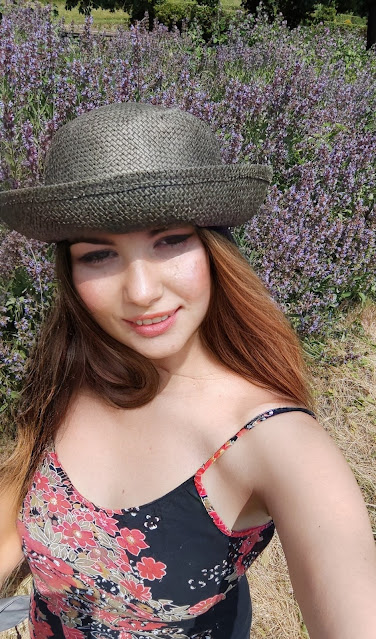Paul P. at Morena di Luna
Artist: Paul P.
Venue: Morena di Luna, Hove
Exhibition Title: Centaurs on the Beach
Date: March 21 – May 10, 2020
Full gallery of images, press release and link available after the jump.
Images:

























Images courtesy of Maureen Paley, London
Press Release:
Maureen Paley is pleased to present a solo exhibition by Paul P. at Morena di Luna, Hove, which will be his third with the gallery.
The ongoing body of portraits that define much of Paul P.’s practice originate in the pages of erotic gay magazines produced in the years bracketed by the advent of gay liberation and the beginning of the AIDS crisis; a period of tenuous, provisional freedom. He takes the explicit materials of desire from recent queer history and uses them to consider broader historical representations of homosexual desire: a veiled language, springing from subtlety and innuendo in which beauty, often in the guise of mythological creatures and gods, found safe passage in eras of criminalisation. From their original position in time the portraits look back to the transient wellsprings of queer aesthetics, and forward to future liberties and tragedies, wherein aesthetic energy loses and regains its unruly value.
As a young man in the late 1920s, the novelist Jocelyn Brooke would escape responsibility and go sunbathing with a friend. Sometimes a cavalry regiment would trot by before him along the water’s edge, shirtless on horseback. ‘I meditated a poem about centaurs’, he recounted, ‘but decided it would be a mistake’. Today, Brooke is almost entirely forgotten, but in his lifetime he saved fellow writer Denton Welch from obscurity by overseeing the posthumous publication of Welch’s Journals in 1952. In Brooke’s introduction he quotes Welch’s journal from 1946, two years before his early death: ‘how tedious the little details seem, written down, yet it is always that littleness that seems to have, banked up behind it, great walls of fight and resistance.’ Brooke, like Welch, was a keen practitioner of the ancient art of implicit homosexuality. Both were attuned to the slight, the fleeting and the otherwise unobserved in their surroundings. Sensations they would shore up and parlay into something substantive and sustaining. Brooke’s brief mention of the unrealised ode to the centaurs conjures a poem nevertheless.
Poet Ann Carson translated a fragment by Sappho, consisting merely of two words on an otherwise empty page: ‘cloth dripping’. Whether Sappho was describing the towel of a lover who had freshly emerged from swimming in the sea, her robes after a rainstorm, or washed bed sheets strung out to dry, the image of the sopping veil, unmoored, flaps ambiguously between innumerable possible worlds. The littleness it describes gains power through innuendo accrued over the ages.
Alongside the portraits are P.’s paintings derived from the architecture and atmosphere of Venice, Italy, and its contemporary pendant, Venice Beach, California; aesthetically charged, water bounded locations, haunted by bygone eras of licentiousness, and their attraction to societal outcasts. Planes of abstracted colour refer to the painted stucco walls, the hovering blocks of sheets on a laundry line, the all-effacing blue of sky and sea, and a yellow monochrome describes an area of light itself. Smaller works on paper add further considerations of ephemerality. A suite of cresting waves, as well as icebergs: colossal fragments from a millennia-old body, drifting towards a rapid disintegration. As well, a singular work shows a supine Stephen Tennant, collaged onto torn notepaper. Similarly adrift, Tennant’s life spanned from the wake of Oscar Wilde’s death until the height of the AIDS epidemic. He is now remembered, if at all, as an effete dandy who, although having dissipated his early promise through indolence, pretence and superficial stratagems, became an accurate and witty font of knowledge for retro queer gestures and inflections. These works comment on the past while reflecting on the relevance of these observations in the present.
Selected exhibitions include Arrière-pensée, Lulu, Mexico City, Mxico; Slim Volume, Queer Thoughts, New York, USA, 2019; Front International: Cleveland Triennial for Contemporary Art, Cleveland, Ohio, USA, Belonging to a Place, Canadian Embassy, Washington, DC, USA, 2018; Whitney Biennal 2014, New York, USA, 2014; Les paris sont ouverts, Freud Museum, London, UK, Compass: drawings from MoMA, Martin-Gropius-Bau, Berlin, Germany, 2011; Male, curated by Vince Aletti, Maureen Paley, London, UK, 2010; Compass in Hand, Museum of Modern Art, New York, USA, 2009; The Boys of Summer, The Fireplace Project, East Hampton, Male, White Columns, New York, USA / Presentation House Gallery, Vancouver, Canada, 2008; People Take Pictures of Each Other, LaMontagne Gallery, Boston, USA, Crack the Sky, Biennale de Montreal, Montreal, Painting as Fact – Fact as Fiction, de Pury and Luxembourg, Zurich, 2007; People, Museo d’Arte Contemporanea Donnaregina, Naples, 2006; Origins of Harold, Deitch Projects, New York, USA, Republic of Love, The Power Plant, Toronto, Canada, 2004.
Link: Paul P. at Morena di Luna
from Contemporary Art Daily https://bit.ly/2We8N4v





Комментарии
Отправить комментарий